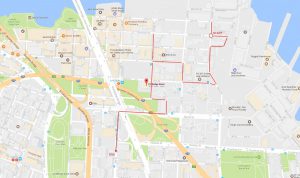For the final project, the class will create a project site on the OpenLab to which everyone will contribute. Each team will have its own page on the OpenLab project site. Each team is responsible for the design of your project and for any sub-topics included. Within the team, students will assume responsibility for a sub-topic as well as various roles including graphics & visualization editor, writer/editor, References manager etc.
Final Report Guidelines — In this project, each team will collectively determine the form that their project will take within the OpenLab:
- Consider the purpose and audience of their project
- Develop project deliverables that reflect the audience and purpose of their project
- Incorporate research from primary and secondary sources and appropriately cite sources
- Articulate research findings as well as analysis and original work through writing and visual documentation
- Determine appropriate graphic language and compositional modes
- Publish deliverables on the OpenLab project site
- Prepare a PowerPoint slide presentation to deliver and discuss in class
Key Dates
May 3: Finalize purpose and audience of the project, outline and list of deliverables
May 8 + 10: In class work on project
May 15: Project drafts completed + In class progress presentations (power point optional)
May 22: Projects live on OpenLab + Final PowerPoint/slide presentations due
May 24: Final presentations continue + reflection
Final Project Grading rubric
Clarity of project concept – 15%
Extent of research conducted – 20%
Extent and clarity of analysis of evidence pertaining to hypothesis, writing, and documentation/references – 20%
Final project deliverables – 15%
Clarity, logic and graphic presentation on the OpenLab – 15%
PowerPoint presentation and in-class discussion of the project – 15%




